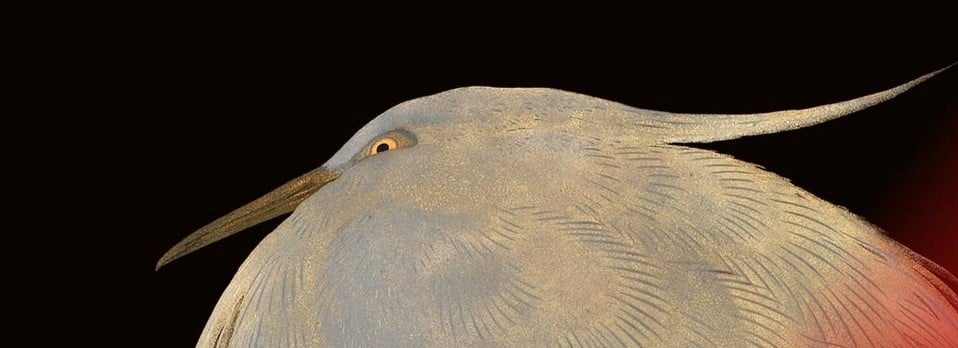
Pair of jars with mounts
jars: mid-18th century, mounts: mid-18th centuryPorcelain with moulded decoration painted in underglaze blue and overglaze iron-red enamel, mounted in gilt bronze | 19.4 x 23.5 x 13.0 cm (whole object) | RCIN 388
These rare Arita jars are almost enveloped by their elaborate French gilt-bronze mounts, but the small hexagonal vessels beneath are of unusual form and decoration. Each is decorated with minuscule moulded figures of men and children along with bamboo and sprays of plum blossom. The designs are glazed and coloured in blackish-blue and red, and the unglazed surfaces coloured with washes of pinkish-red. Both jars are also impressed with small stars in a ‘honeycomb’ pattern, which was noted when they were inventoried in the Music Room Gallery at the Royal Pavilion, Brighton, in 1828.
The mid-eighteenth century mounts have no practical function and must be considered works of art in their own right. They may have been modelled on a design used at the renowned Sèvres porcelain manufactory (est. 1740) near Paris. That design, known as the vase à bâtons rompus, featured angular handles and laurel garlands. The French vase shape was manufactured from 1764 and possibly designed by Étienne-Maurice Falconet (1716–91). George IV acquired both the Sèvres piece and this Franco-Japanese confection, in keeping with his varied and cosmopolitan taste. Lord Yarmouth probably acquired a Sèvres vase of this model (see RCIN 2290) as part of a garniture (with two vases ferrés) in Paris in 1817.
Pair of hexagonal jars with rounded base and spreading sides, these rare items are impressed with small stars, and on the main faces, small moulded figures of men and children in recessed panels, with bamboo and prunus sprays on others; the designs glazed and coloured in blackish-blue and red, the unglazed surfaces with washes of pinkish-red. The hexagonal gilt-bronze top mount consists of a pierced everted rim with a hirsute male mask on each side, below which are pinned laurel swags (perhaps added slightly later in the eighteenth century), and with a pair of angled double handles joining the rim and foot, draped with laurel garlands. The jar is supported on a leafy band of repoussé gilt bronze, joined to a high-waisted stem with pierced sides. The jars are lacking their covers.
Text adapted from Chinese and Japanese Works of Art in the Collection of Her Majesty The Queen: Volume II and Japan: Courts and Culture (2020)







